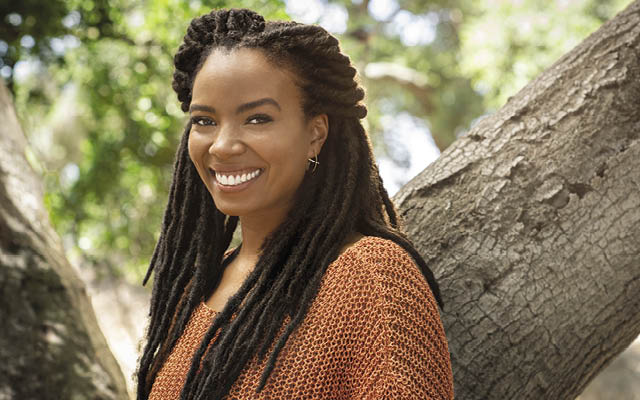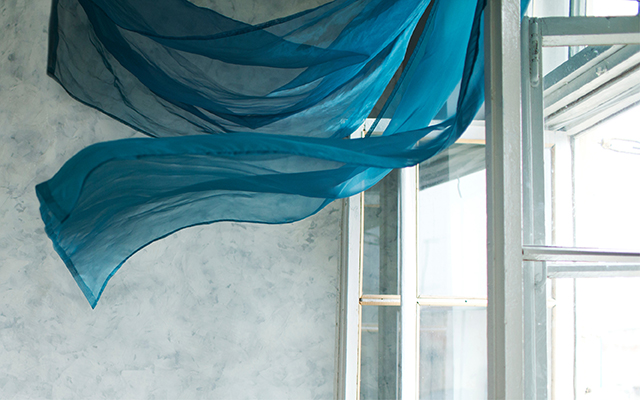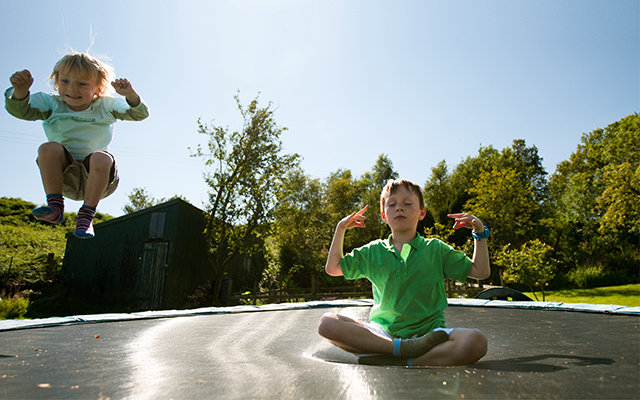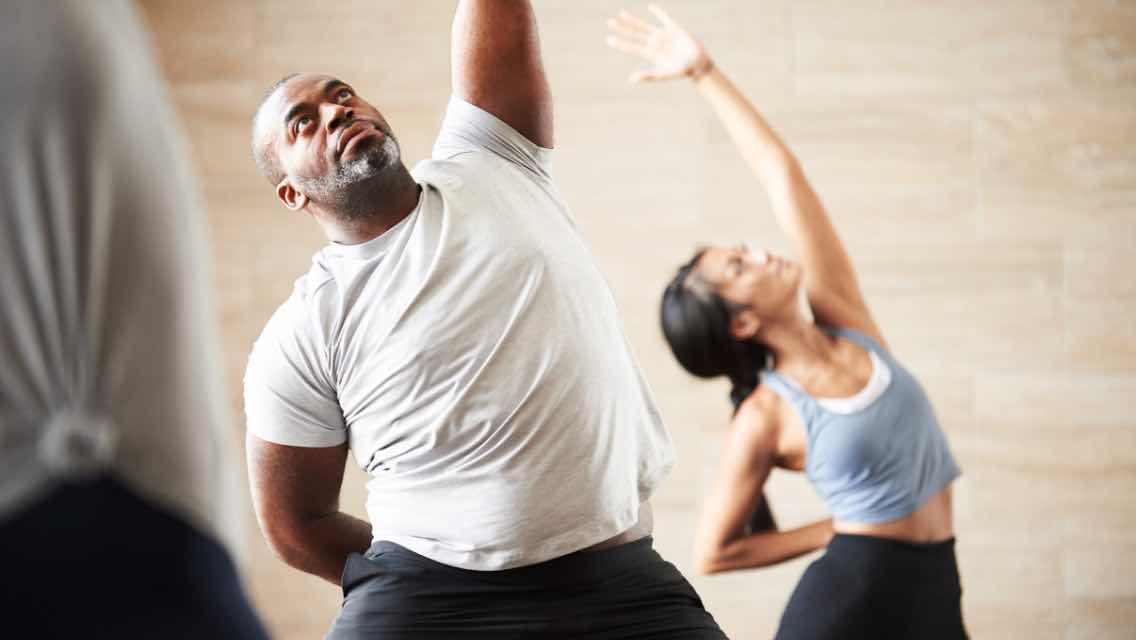Yoga didn’t come easy for Chelsea Jackson Roberts. As an 18-year-old Spelman College student struggling with weight gain, she thought yoga seemed like an accessible way to reconnect with her body. But the first class she went to was a hot-yoga class, and she ended up fainting.
She kept practicing and found that it helped her cope with the stresses that accompany teaching third graders at a Title I school. “Public-school teachers are overworked, underpaid, and undervalued,” she explains, “especially when they’re serving communities that may not have the resources to be able to meet the requirements that are placed on children through standardized testing.”
Seeing how yoga benefited her own well-being, she began to integrate its practices — such as breath work and moments of silence — into the school day. “The kids began asking me if they could do more,” Roberts recalls.
Her yoga-practicing students achieved the highest scores on federal standardized tests, and there were notable changes in the way the kids interacted with one another. “They were kinder and more compassionate,” she says.
These positive connections between educational achievement and yoga sparked the Dayton, Ohio, native to become a certified yoga instructor in 2007 and begin offering community and after-school classes.
Her experiences with students on the mat and in the classroom led to a novel PhD dissertation case study. In 2013 she co-created an innovative summer camp that uses yoga and storytelling to help teen girls of color develop their literacy skills.
A Lululemon global yoga ambassador, Roberts cofounded Atlanta-based Red Clay Yoga in 2014 to provide tuition assistance and other funding for the annual camp while helping spread awareness about the unique challenges facing marginalized youths and their communities.
Experience Life | Why did you decide to explore how yoga, literature, and art work together in relationship to young girls of color — and start a summer camp around these disciplines?
Chelsea Jackson Roberts | When I left the classroom in 2009, I was teaching at a constructivist school — similar to Montessori — where you co-create with your students. I had a lot of autonomy and support to be creative in how I delivered material.
Compared with the experience of being a schoolteacher in a Title I school — where it was expected that kids were just supposed to sit down, read a book, and produce specific information — I started to wonder what would happen if students could embody the art and literature they were exposed to.
I’d previously seen that students have multiple intelligences that they use to interpret their placement in the world. For example, I was an avid reader as a little girl, but I was also aware that I wasn’t always fully reflected in the stories I read. While I identified with characters like Ramona Quimby because she was a little girl, I also didn’t see my reflection in the illustrations or in the experiences that she was going through.
So after having these different types of teaching experiences, I decided to step away from the classroom and applied to a PhD program at Emory University in educational studies with a concentration on language, literacy, and culture.
I decided to use yoga as a lens because I wondered what would happen if we focused on it as a way of learning.
Since it was imperative to have a space that centered the experiences of those who self-identified as young girls of color, we chose my alma mater, Spelman College, as our camp location because its art museum is the only one in the nation that emphasizes art created by women from throughout the African diaspora.
I wanted to normalize the girls’ position as artists, writers, and yoga teachers, and as wise humans who possess a wealth of knowledge that has been handed down to us but hasn’t always been elevated in our society.
EL | Restorative justice is a critical part of your work in the communities you’re involved in, including the summer camp. What is it, and why did you decide to use this method?
CJR | Restorative justice is a concept in legal practices that comes in part from indigenous communities that use this form of speaking to create equity within the community. The group meets in a circle, which signifies that there is no hierarchy and shows that we’re all equal participants and contributors. You typically use a talking piece to make sure everyone’s voice is heard: If you’re holding the talking piece, you have the floor to speak.
Since some people aren’t always inclined to be the first person to share a thought or ask a question, knowing that you’ll have a chance to ask or share something later is a great tool for engaging a young woman, for example, who may not step forward initially.
It’s also a method for allowing closure or acknowledgment. For example, it allows someone who may have experienced being a victim to have a conversation with the person who is accused of carrying out this offense. It’s not just about a way of confronting wrongs in a community — which do happen — but it’s also a method for celebrating what’s right in a community.
EL | You’ve said that yoga can be a tool for helping people understand the impact that power and privilege have on our lives and the lives of others. Can you talk about that?
CJR | I hope that is what yoga is encouraging people to do — it’s a very humanizing way to approach conversations around injustice. During these discussions, many people experience guilt while others may be thrown back to past trauma.
What I’ve witnessed and experienced in my work is that when we include yoga in the process of talking about justice and injustice, equity and inequity, it gives us a chance to engage our whole selves in the discussion.
We walk in this world accumulating experiences that get stored in our bodies. It creates tension when we experience harm in the world. That harm creates a hypervigilance where we may feel triggers when we go into certain spaces where we’ve been harmed.
When you engage the embodied practices of yoga, you have a built-in tool to support having those tough conversations or reflections on our relationships to our experiences.
For example, when we’re able to get quiet and really listen to our body and how it responds to even just someone asking us to do something with our body, we have an opportunity to practice observing how we respond to that situation. This moment of reflection allows us a chance to choose a different way to respond.
EL | What are some lessons you’ve learned from yoga?
CJR | That there’s a lot of power in the breath! Sometimes I think there’s an overemphasis on the body in yoga. So I always tell students, “If you can breathe, you can do yoga.”
I invite practitioners, whether they’re in their first or one-thousandth class, to remember that the breath is key and to observe it. Observe it when you’re on your mat, but also pay attention to it when you’re out in the world. How does your breath respond in traffic? How does it respond during transitions? Every breath that we take counts.




This Post Has 0 Comments